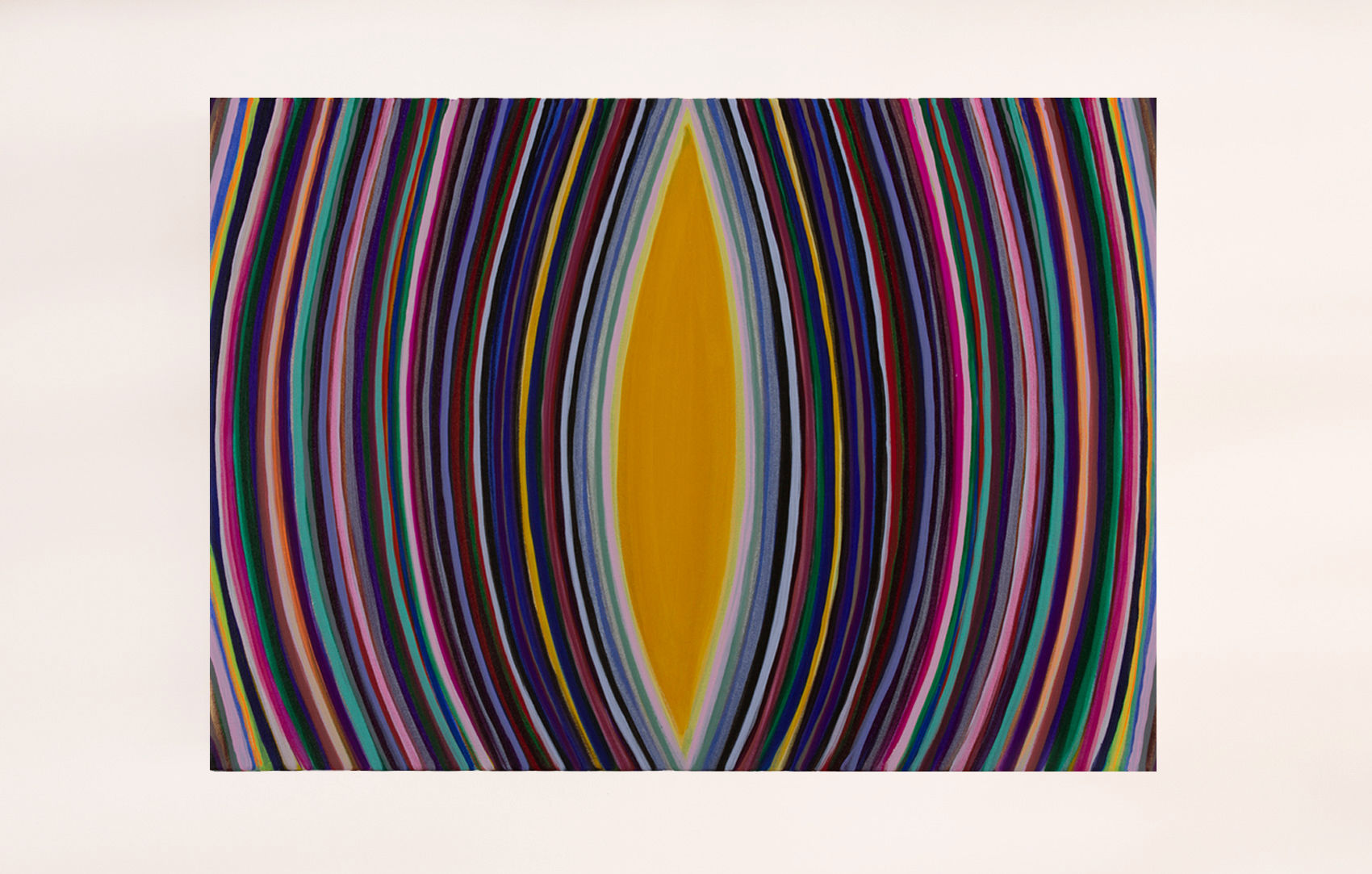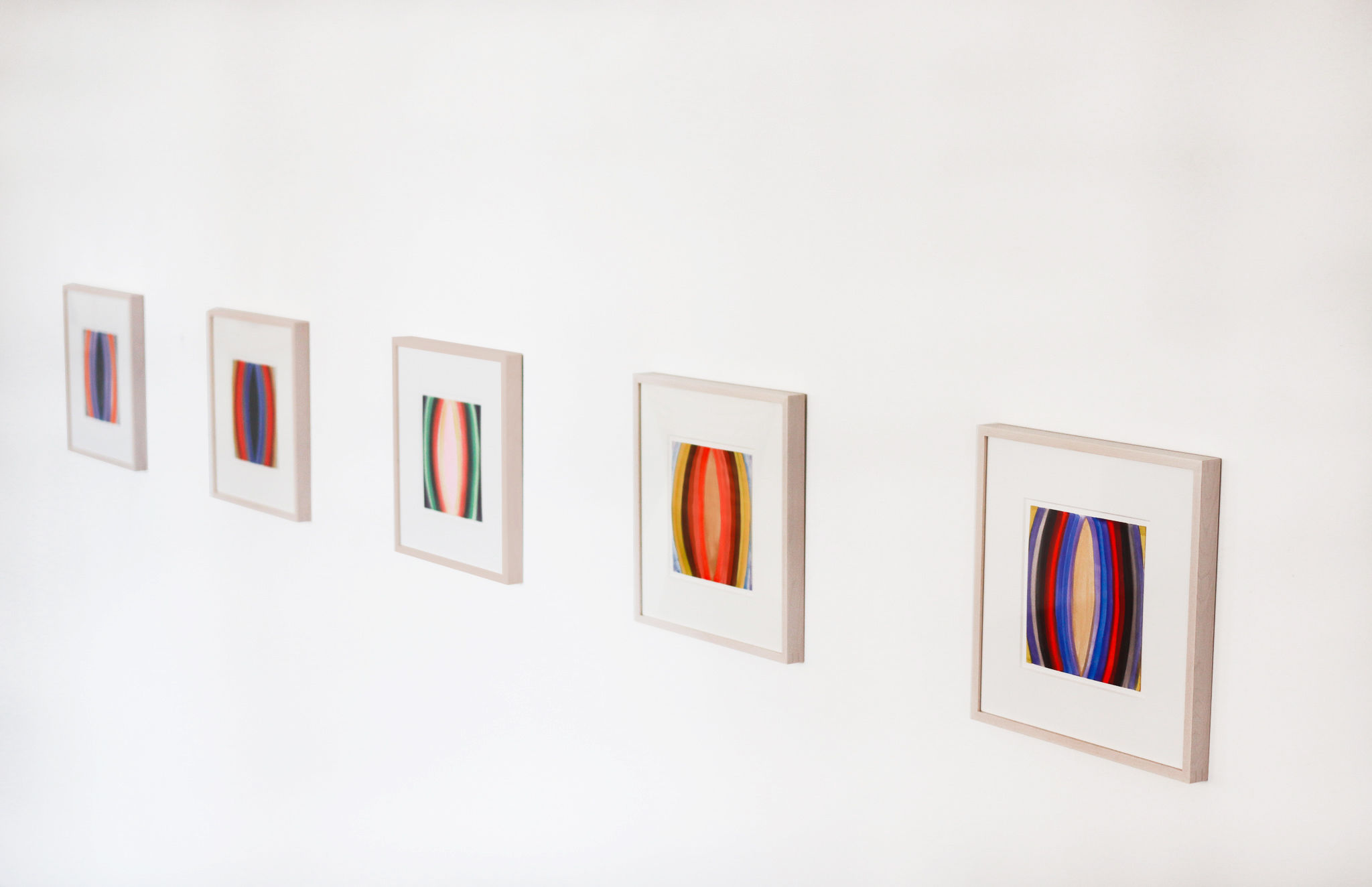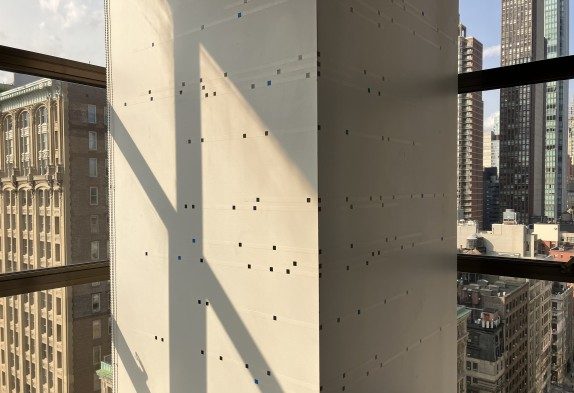Jennifer Nichols: Dream Baby Dream
Artist Statement:
Through color, symmetry, and repetition I create works at once centering and energetic. Dream Baby Dream selects twenty-five watercolors and one painting from an ongoing series of pictures that I think of as color scenarios. Each is a chromatic variation on a shared compositional motif of curved lines suggesting halos, eyes, vulvas, leaves or parenthesis. There is both a balance and an opposition between the immediacy of the watercolors and the continuance of the paintings. In each case, I hope to offer works that are emblems of affirmation, freedom, and possibility.


Q: Is there a specific chronology inherent in the repetition of the series?
The earlier paintings have wider bands, whereas the recent ones are smaller. However the palette has changed – it may be considered a little more “sophisticated.” I think when you make paintings you’re always striving for something. You always think that the next thing you make is going to be better. But basically as the bands have gotten smaller I’ve gotten a lot more obsessive about the color relationships, and getting them right, whatever that means. Right to me.
An artist friend of mine, Amy Sillman, came to my studio a few years ago and commented on how it seemed like always started from the center of a painting versus starting from the exterior. I think having those kinds of limitations on a painting also provides some freedom. Within the images I work with, I could approach the shapes from either extremity. It feels open-ended in that sense. I think it’s a way to get out of the routine, the sameness of repetition. There is some variety inherent in the process.

Q: You have a recurring form in these pieces. Where did they come from?
I know a lot of people might think of female genitalia when they first look at these paintings. It wasn’t the initial thought, but over time I think they’ve come to resemble that. I went through a pregnancy, I gave birth. It was sort of accidental. To me they could be anything, but they definitely have a female curve – in architecture, you don’t see too many curves, but in painting, anything goes.
I agree that there are gender associations. Being a female artist, and more recently after working for Richard Meier, who was recently “Me Too’d,” – that was something that I went through with the whole office. How do you deal with the aftermath of something like that? How can you be a woman artist and still have a voice within these dialogues? Being a woman, being a mom, I think the paintings for me bring me a lot of confidence. They allow me to have a voice.

About the Artist:
Jennifer Nichols received her MFA from the School of the Museum of Fine Arts in affiliation with Tufts University in 2012, and studied at the Hochschule für bildende Künste Hamburg in 2010. She received her BFA in 2006 from Cornell University with a concentration in architecture.




